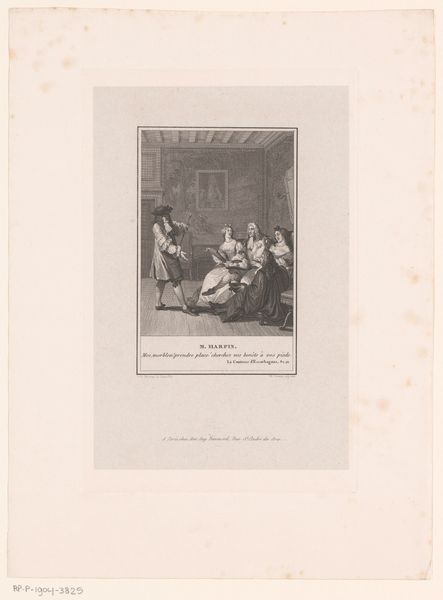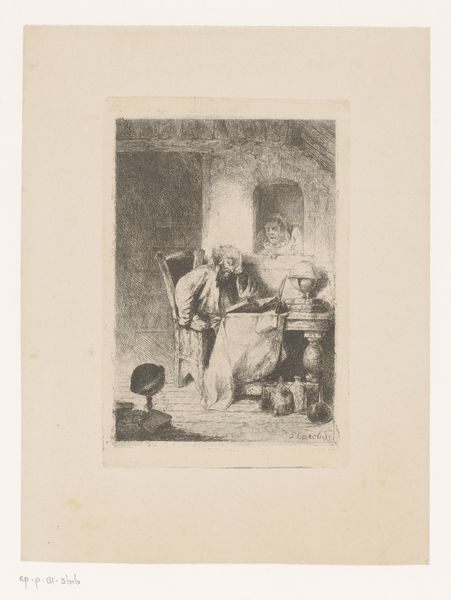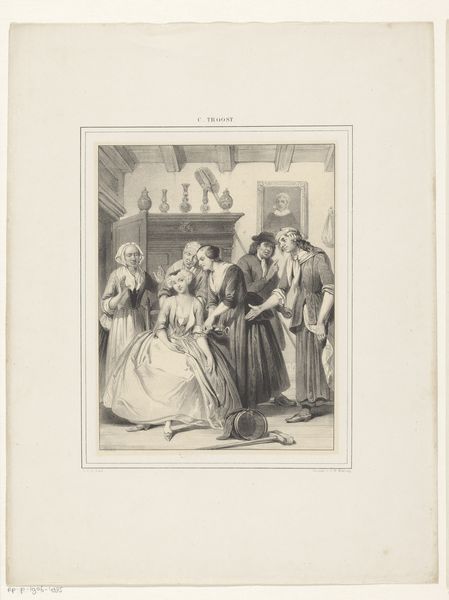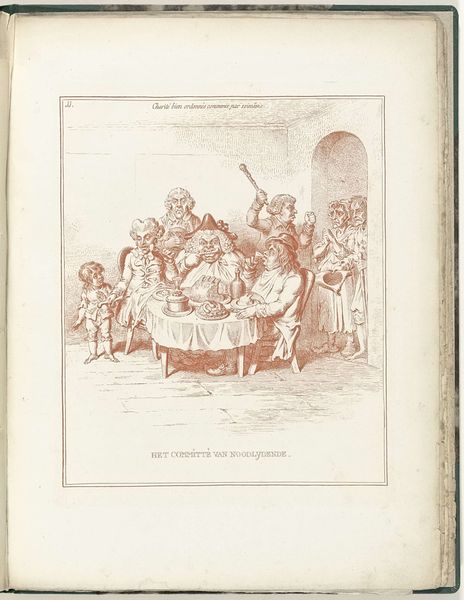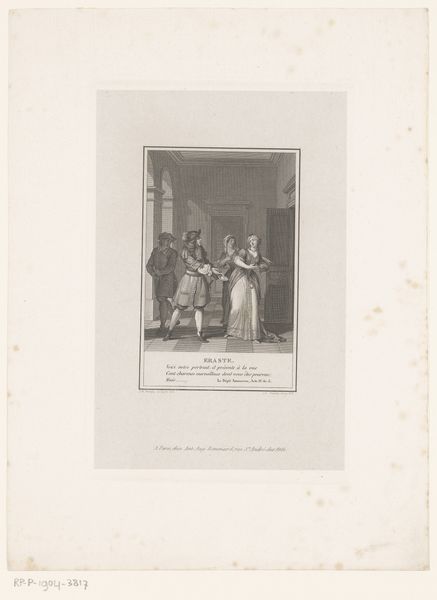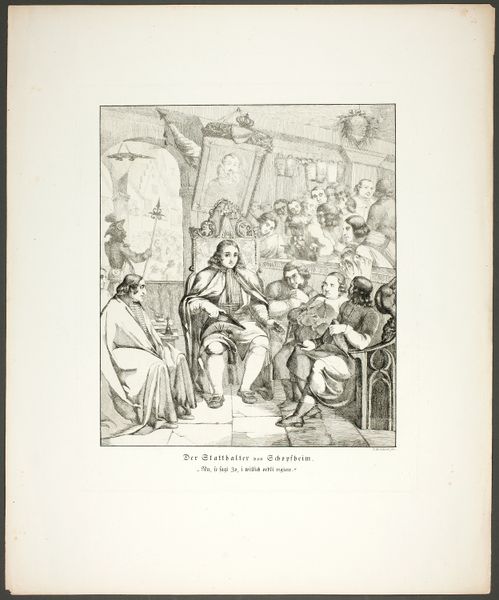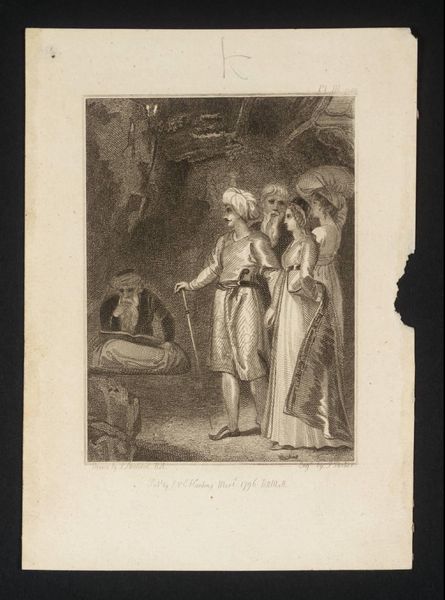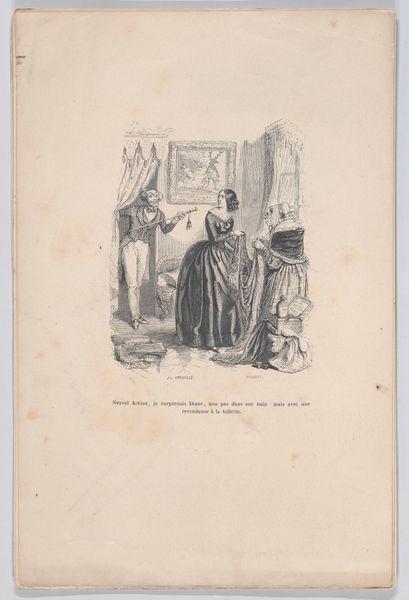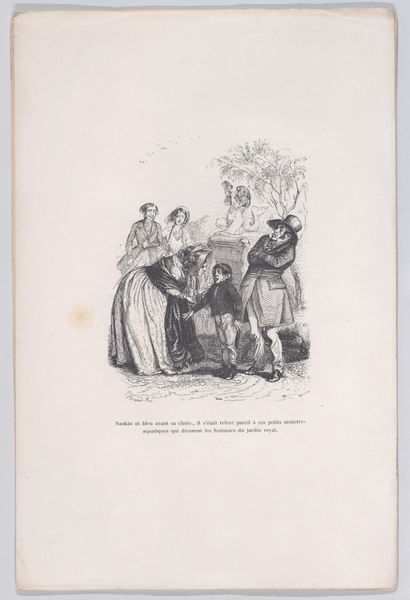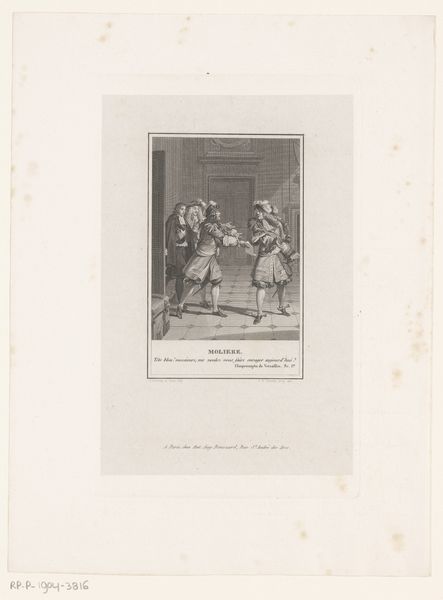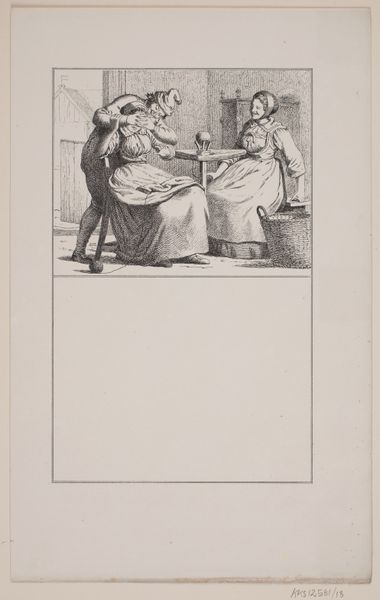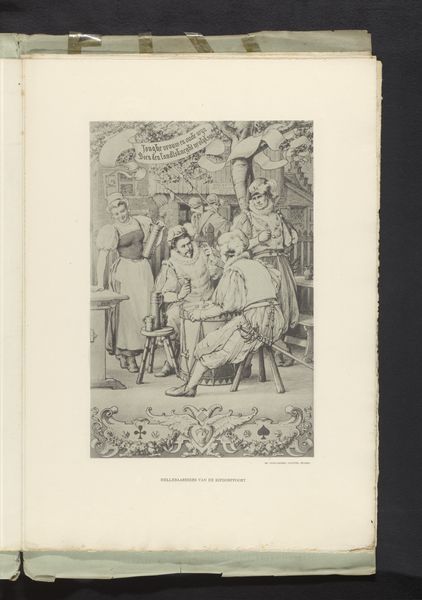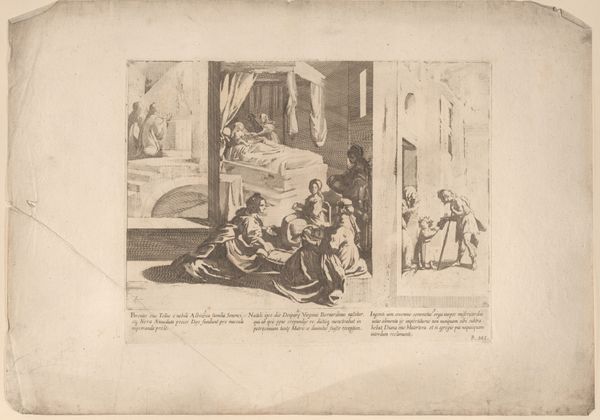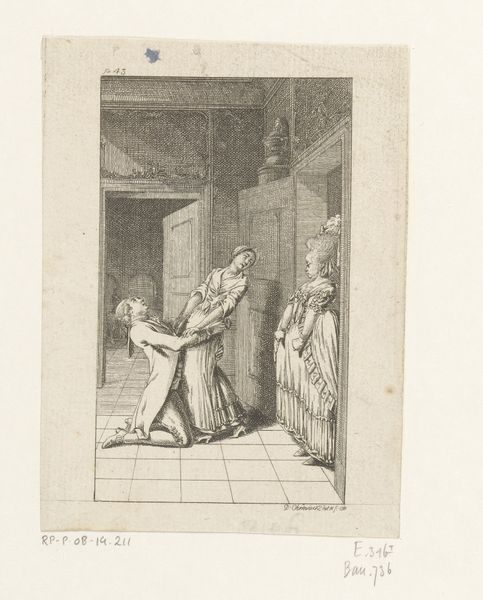
The Signpost, plate ten from Zehn Blätter zu Hebels Alemannischen Gedichten 1820
0:00
0:00
drawing, print, etching, paper, ink
#
drawing
#
ink drawing
#
narrative-art
# print
#
pen sketch
#
etching
#
figuration
#
paper
#
ink
#
romanticism
#
men
#
line
#
pen work
#
genre-painting
#
history-painting
Dimensions: 317 × 264 mm (plate); 464 × 379 mm (sheet)
Copyright: Public Domain
Curator: Here we have an etching by Sophie Reinhard, made around 1820. It’s titled "The Signpost, plate ten from Zehn Blätter zu Hebels Alemannischen Gedichten," and it’s currently part of the Art Institute of Chicago’s collection. Editor: My first impression is one of intriguing detail. The fine lines create such depth, despite the limited tonal range. It's as though you could feel the grain of the paper and the weight of the ink on the page. What do you make of it? Curator: What strikes me is its historical context. These prints were illustrations for a book of poems by Johann Peter Hebel, reflecting on everyday life in the Alemannic region. The image, depicting what seems to be someone giving counsel, offers a window into the social dynamics of the time. Editor: I agree. And there's something incredibly compelling about the production of this kind of print—the physical act of etching, the layering of ink, and the transfer to paper. It gives the image a sense of handcrafted authenticity, making you appreciate the artist's labor. The materiality really reinforces its social commentary. Curator: Precisely! Printmaking democratized art to an extent, making it accessible to a wider audience than paintings typically were. The artist’s role became somewhat of a conduit for cultural narratives, reproducing and disseminating stories relevant to a larger community. Editor: But looking closely at that transfer—etching isn't like drawing freehand, the amount of control the artist yields, accepting accidents, feels almost collaborative with the materials. What looks controlled and precise to our eyes now, was more improvisational at the point of making. Curator: Indeed, it also showcases a kind of idealization of rural life which was a characteristic of Romanticism and increasingly sought after in that moment. These scenes contributed to constructing a specific regional identity and values through readily distributed imagery. Editor: It is a potent example of Romantic aesthetics meeting the gritty reality of material production, making visible a kind of early mass media artifact! I will not forget this work any time soon. Curator: An intersection of social commentary and artistic ingenuity. An excellent insight into the forces that shaped both art and society at the time.
Comments
No comments
Be the first to comment and join the conversation on the ultimate creative platform.
